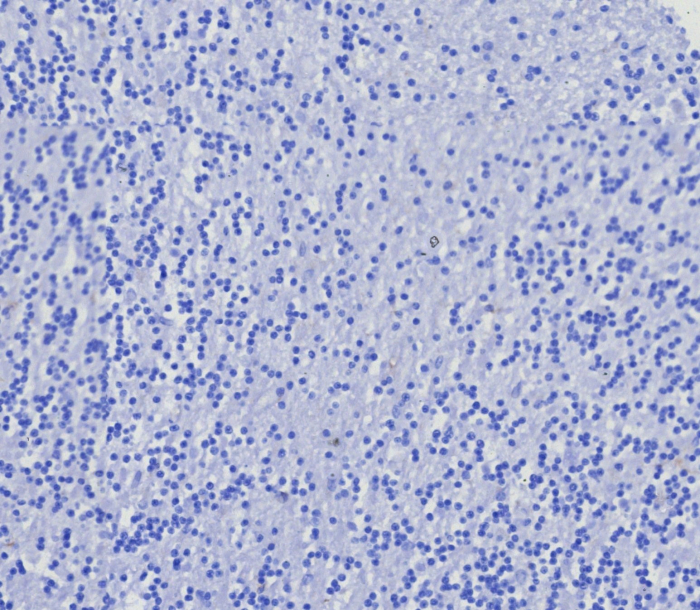CD4 Products
CD4 is a transmembrane glycoprotein that is expressed predominantly on thymocytes and a subset of mature T lymphocytes. It is a standard phenotype marker for the identification of T cell populations. CD4 is expressed along with CD8 on double positive T cells during their development in the thymus. Either CD4 or CD8 expression is then lost, giving rise to single positive (SP) CD4+ or CD8+ mature T cells. CD4+ SP cells, also known as T helper cells, further differentiate into multiple subsets of CD4+ cells including Th1, Th2, Th9, Th17,Th22, Tfh, and Treg cells which regulate humoral and cellular immunity. In human, CD4 is additionally expressed on macrophages, neutrophils, monocytes, NK cells, and neurons and glial cells in the brain. CD4 binds directly to MHC class II molecules on antigen presenting cells. This interaction contributes to the formation of the immunological synapse which is focused around the TCR-MHC class II-antigenic peptide interaction. CD4 also functions as a chemotactic receptor for IL-16 and, in human, as a coreceptor for the gp120 surface glycoprotein of HIV-1.
739 results for "CD4" in Products
739 results for "CD4" in Products
CD4 Products
CD4 is a transmembrane glycoprotein that is expressed predominantly on thymocytes and a subset of mature T lymphocytes. It is a standard phenotype marker for the identification of T cell populations. CD4 is expressed along with CD8 on double positive T cells during their development in the thymus. Either CD4 or CD8 expression is then lost, giving rise to single positive (SP) CD4+ or CD8+ mature T cells. CD4+ SP cells, also known as T helper cells, further differentiate into multiple subsets of CD4+ cells including Th1, Th2, Th9, Th17,Th22, Tfh, and Treg cells which regulate humoral and cellular immunity. In human, CD4 is additionally expressed on macrophages, neutrophils, monocytes, NK cells, and neurons and glial cells in the brain. CD4 binds directly to MHC class II molecules on antigen presenting cells. This interaction contributes to the formation of the immunological synapse which is focused around the TCR-MHC class II-antigenic peptide interaction. CD4 also functions as a chemotactic receptor for IL-16 and, in human, as a coreceptor for the gp120 surface glycoprotein of HIV-1.
| Reactivity: | Human, Mouse, Rat, Canine, Porcine, +2 More |
| Details: | Rabbit IgG Polyclonal |
| Applications: | IHC, WB, ICC/IF, Flow, B/N, +2 More |
Recombinant Monoclonal Antibody
| Reactivity: | Human |
| Details: | Rabbit IgG Kappa Monoclonal Clone #CD4/8203R |
| Applications: | IHC |
Recombinant Monoclonal Antibody
| Reactivity: | Human |
| Details: | Rabbit IgG Kappa Monoclonal Clone #CD4/8203R |
| Applications: | IHC |
Recombinant Monoclonal Antibody
| Reactivity: | Human |
| Details: | Rabbit IgG Kappa Monoclonal Clone #CD4/8203R |
| Applications: | IHC |
Recombinant Monoclonal Antibody
| Reactivity: | Human |
| Details: | Rabbit IgG Kappa Monoclonal Clone #CD4/8203R |
| Applications: | IHC |
Recombinant Monoclonal Antibody
| Reactivity: | Human |
| Details: | Rabbit IgG Kappa Monoclonal Clone #CD4/8203R |
| Applications: | IHC |
Recombinant Monoclonal Antibody
| Reactivity: | Human |
| Details: | Rabbit IgG Kappa Monoclonal Clone #CD4/8203R |
| Applications: | IHC |
| Reactivity: | Human |
| Details: | Goat IgG Polyclonal |
| Applications: | WB, Simple Western, IHC, ICC |
| Reactivity: | Human |
| Details: | Goat IgG Polyclonal |
| Applications: | Flow, ICC |
Clone RPA-T4 was used by HLDA to establish CD designation.
| Reactivity: | Human |
| Details: | Mouse IgG1 kappa Monoclonal Clone #RPA-T4 |
| Applications: | IHC, ICC/IF, Flow, CyTOF-ready, Func, +2 More |
| Reactivity: | Canine |
| Details: | Mouse IgG2b Monoclonal Clone #296712 |
| Applications: | WB, Flow, CyTOF-ready, ICC |
Recombinant Monoclonal Antibody
| Reactivity: | Human |
| Details: | Human IgG4 Monoclonal Clone #ibalizumab |
| Applications: | ELISA, Flow, Func |
| Reactivity: | Mouse |
| Details: | Rat IgG Kappa Monoclonal Clone #GK1.5 |
| Applications: | IHC, ICC/IF, Flow, IP, Func, +1 More |
| Source: | Sf 21 (baculovirus) |
| Accession #: | P01730.1 |
| Applications: | BA |
| Reactivity: | Human |
| Details: | Mouse IgG2a Monoclonal Clone #11830 |
| Applications: | Flow |
| Reactivity: | Mouse |
| Details: | Goat IgG Polyclonal |
| Applications: | WB |
| Reactivity: | Rat |
| Details: | Mouse IgG1 Monoclonal Clone #W3/25 |
| Applications: | IHC, ICC/IF, Flow |
| Reactivity: | Human |
| Details: | Mouse IgG2a Monoclonal Clone #11830 |
| Applications: | Flow |
| Reactivity: | Human |
| Details: | Mouse IgG2a Monoclonal Clone #11830 |
| Applications: | Flow |
| Reactivity: | Human |
| Details: | Mouse IgG2a Monoclonal Clone #11830 |
| Applications: | Flow |
| Reactivity: | Mouse |
| Details: | Rat IgG2b Monoclonal Clone #GK1.5 |
| Applications: | Flow |

![Immunohistochemistry: CD4 Antibody - BSA Free [NBP1-19371] Immunohistochemistry: CD4 Antibody - BSA Free [NBP1-19371]](https://resources.bio-techne.com/images/products/CD4-Antibody-Immunohistochemistry-NBP1-19371-img0017.jpg)





![Flow Cytometry: CD4 Antibody (RPA-T4) - Azide and BSA Free [NBP2-25199] Flow Cytometry: CD4 Antibody (RPA-T4) - Azide and BSA Free [NBP2-25199]](https://resources.bio-techne.com/images/products/CD4-Antibody-RPA-T4-Flow-Cytometry-NBP2-25199-img0007.jpg)



![Functional: CD4 Antibody (ibalizumab) - Humanized, IgG4SP[NBP3-28350] - CD4 Antibody (ibalizumab) - Humanized, IgG4SP](https://resources.bio-techne.com/images/products/nbp3-28350_cho-cd4-mab-ibalizumab-humanized-igg4sp-20620242255325.img%3Fimgid=5728)

![Immunohistochemistry-Frozen: CD4 Antibody (GK1.5) - BSA Free [NBP2-25191] Immunohistochemistry-Frozen: CD4 Antibody (GK1.5) - BSA Free [NBP2-25191]](https://resources.bio-techne.com/images/products/CD4-Antibody-GK1-5-Immunohistochemistry-Frozen-NBP2-25191-img0005.jpg)


![Flow Cytometry: CD4 Antibody (W3/25) - BSA Free [NB100-64988] Flow Cytometry: CD4 Antibody (W3/25) - BSA Free [NB100-64988]](https://resources.bio-techne.com/images/products/CD4-Antibody-W3-25-Flow-Cytometry-NB100-64988-img0008.jpg)




